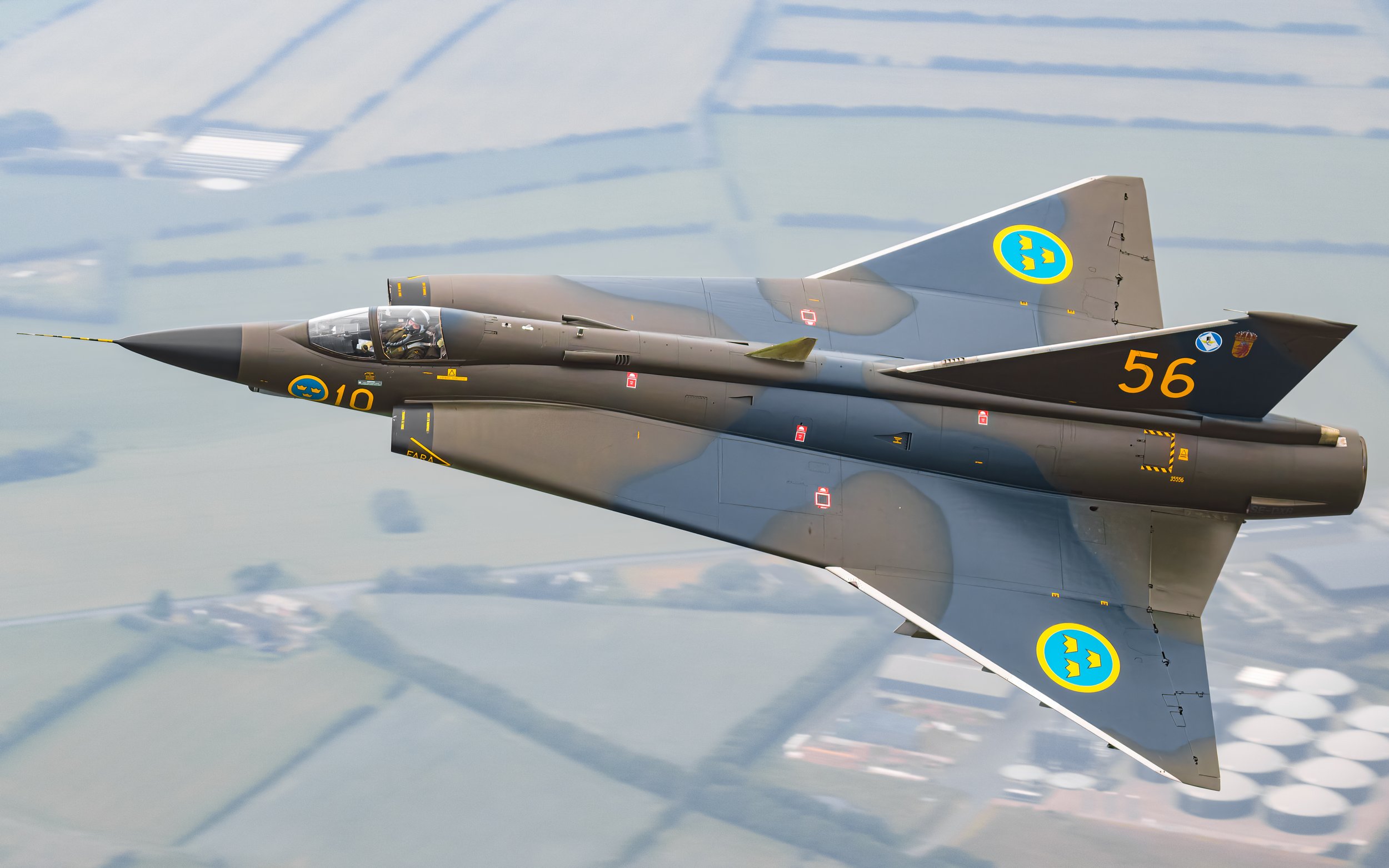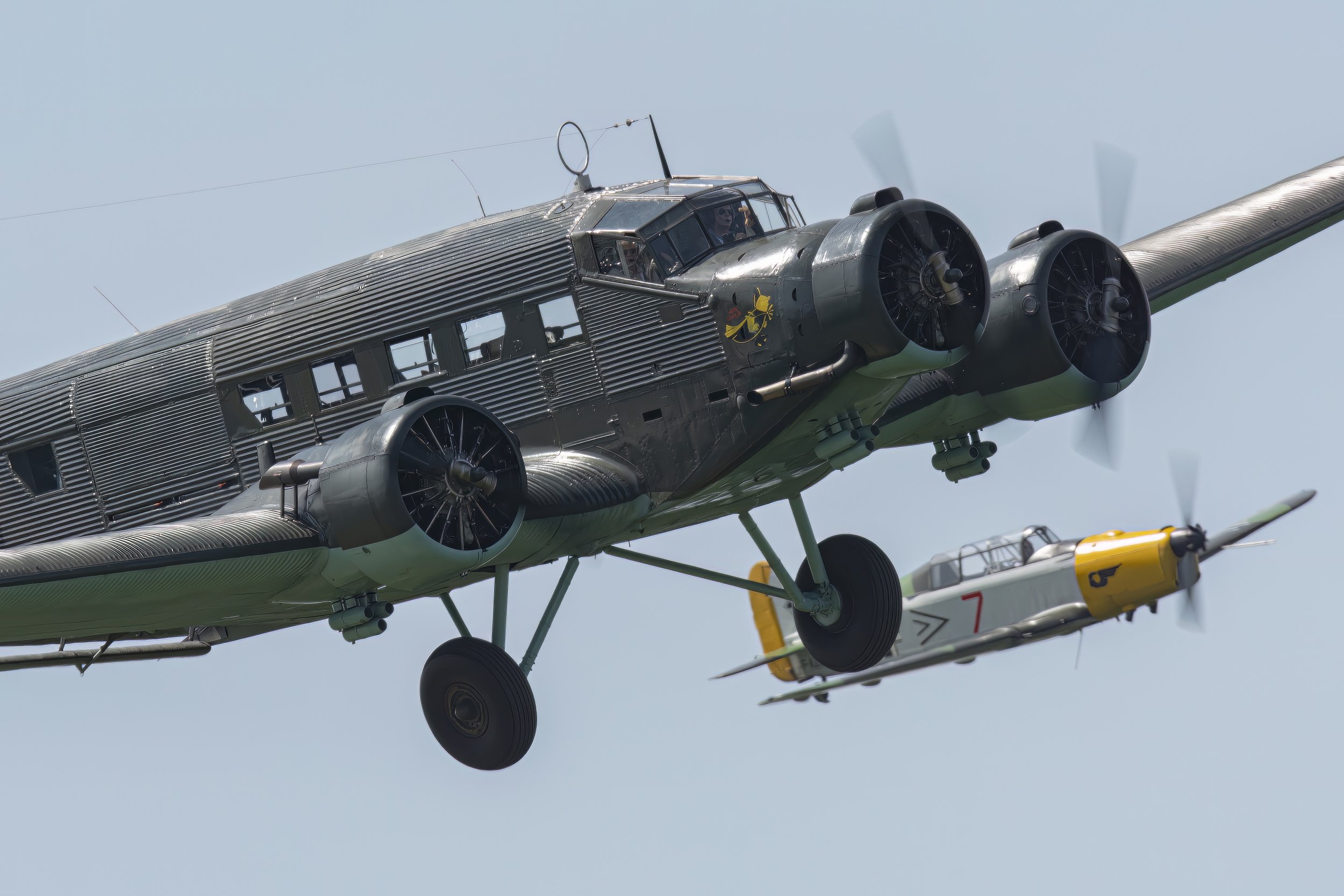Galeb YU-YAE
Year built
1968
Aircraft
G-2A Galeb
Base
Nikola Tesla Airport
YU-YAE Soko G-2A Galeb c/n 23177. Produced for the Yugoslav Air Force as 23177, it was retired in 2000 and went to the civil Aero Club Galeb, Belgrade.
| Back to Top |
Soko G-2A Galeb
The Soko G2 Galeb (English: Seagull) is a Yugoslav single-engine, two-seater jet trainer and light ground-attack aircraft. The G2 was developed during the 1950s by the Aeronautical Technical Institute at Zarkovo as a replacement for the Lockheed T-33 in service with the Yugoslav Air Force. Production started in 1965 at the Soko aircraft factory in Mostar and ended in 1985 with 248 aircraft delivered. The G2 had the distinction of being the first mass-produced jet aircraft in socialist Yugoslavia. It also served as a basis for the single-seat ground-attack J-21 Jastreb.
The RV i PVO took delivery of 128 aircraft that were used by the Air Force Academy for training new pilots. The second-largest operator of the Galeb was Libya, which acquired over 100 aircraft during the 1970s. A small number were also acquired by Zaire, Zambia and Indonesia. During the breakup of Yugoslavia, the Galebs were used for ground attack sorties throughout Croatia and Bosnia and Herzegovina. By 1992, RV i PVO G-2s relocated to Serbia and Montenegro where they operated with the Air Force of the new FR Yugoslavia. The aircraft remained in service until 1999 when the majority of them were destroyed on the ground during the NATO bombing of Yugoslavia.
The Libyan Air Force's G2s were used during the Libyan Civil War by Gaddafi forces, with an unknown number surviving the war and being reported in service as late as 2013. A single aircraft remains in service with the Technical Test Center of the Serbian Armed Forces. A number of aircraft are still flown by civilians as warbirds, including the private aerobatic team "Stars" from Novi Sad.
The G2 Galeb is a versatile trainer aircraft, suited for carrying out a varied range of training missions to minimize the number of aircraft needed to meet an operator's overall training requirements. The aircraft is flown by a crew of two, typically a candidate pilot and an instructor, which are seated in a tandem cockpit layout, the candidate being typically placed in the forward position; both crew members are provided with Folland Type 1-B lightweight ejector seats.
The Galeb is powered by a single Armstrong Siddeley Viper II Mark 22/6 turbojet engine, capable of providing up to 2,500lb of thrust. According to Flight International, the Viper engine provides the aircraft to perform rapid and stall-free acceleration under all conditions. The Galeb has a simple structure, using conventional stressed-skin construction using frames and bulkheads. The rear fuselage, which attaches to the main fuselage of the aircraft just behind the cockpit canopy, enables a high level of accessibility to the engine and the surrounding section; the forward fuselage contains the tandem cockpit, integral centre-section, and most systems. Tail unit pick-up points are present on the rear fuselage bulkhead. The Galeb features an all-metal straight wing, complete with tip tanks; the landing gear retracts into the wings rather than the fuselage.
The hydraulic system includes an engine-driven hydraulic pump, a hydraulic reservoir/accumulator, and a filter. The electrical systems involve a 24-volt battery, a high-energy ignition system, generator, landing and taxi lamps, navigation lighting, and an anti-collision beacon. Pneumatic systems comprise a bleed air compressor, de-icing/de-misting measures, and elements of the environmental control system.
In the absence of a pressurized cabin, the aircraft's practical ceiling is between 7,000 (22,800 ft) and 9,000 m (29,000 ft). According to Soko, a pressurised cabin was developed by 1968 for the Galeb and was made available to customers. The Air Force needed a trainer with secondary combat ability that could operate from unprepared runways; being unfamiliar with such requirements, the designers provided landing gear strong enough to make the aircraft suitable for landing on aircraft carriers. The need for a safe training aircraft that is forgiving on landings meant that the wheels retract into the wings instead of the fuselage, making for a heavier, straight wing, which is less likely to stall on landing but precludes supersonic flight.
The trainer-orientated Galeb has few design differences to the ground attack-orientated Soko J-21 Jastreb; aside from strengthening of the airframe, one distinct difference between the two aircraft is the deletion of the rear cockpit on the J-21 Jastreb, this location has instead been covered by a fairing and the internal space used to contain avionics and other aircraft equipment. The Galeb is readily capable of performing ground attack missions in addition to its training role, being fitted with underwing hardpoints that are compatible with a range of munitions, such as bombs and rockets, along with 12.7mm machine guns; to conduct reconnaissance missions, camera equipment could also be installed upon for the aircraft.
| Back to Top |


| Back to Top |

































